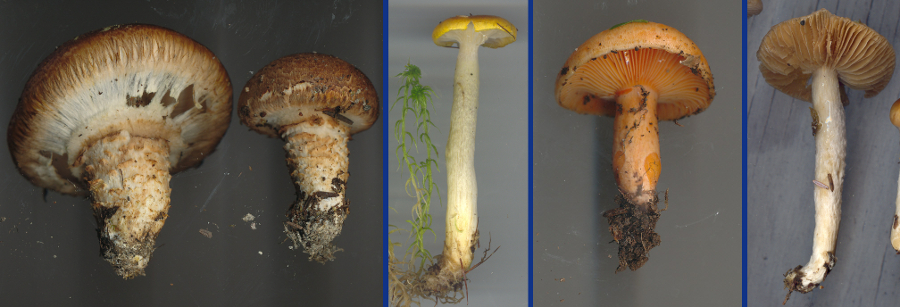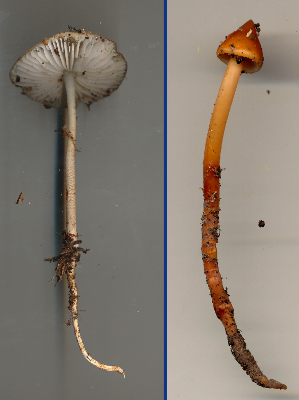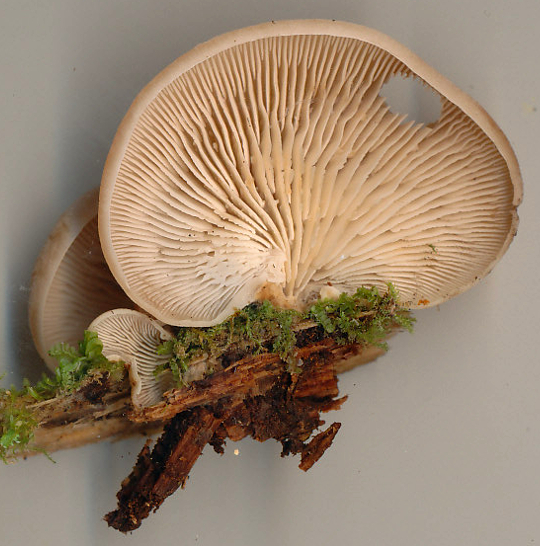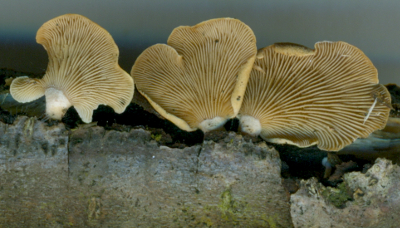STIPE SHAPE

These five pictures illustrate stipes ranging in shape from nearly cylindrical to distinctly broader at the base. The first, Cantharellus cibarius, has a stipe that would be described as CYLINDRICAL or EQUAL by most authors. Even here the stipe is slightly enlarged at its base, although less so than the second, Cortinarius cinnamomeus, which is clearly swollen below. Ampulloclitocybe clavipes, the third mushroom, has a distinctly club-shaped stipe, comemorated in its species epithet derived from the Latin clavus, a swelling, and pes, a foot. Such club-shaped stipes are described as CLAVATE. The last two pictures, showing species of Cortinarius and Inocybe, illustrate as special type of stipe base, especially common in these two genera. These stipes have an abruptly bulbous base with the bulb defined by a more or less distinct margin separating it from the rest of the stipe. Mycologist call this structure a MARGINATE BULB. Some species may have stipes with a bulbous base, but without the margin.

Some mushroom stipes are narrowed toward the base instead of equal or swollen. In Tricholoma sp. (possibly T. focale), in the leftmost panel, the stipe is strongly narrowed toward the rather pointed base. Most authors describe such a stipe as TAPERING DOWN. In some species the stipe may be narrow at the base and the apex but broader in the middle as can be seen, left to right, in Hygrophorus speciosus, Lactarius deterrimus and Cortinarius mucosus. This condition is described as VENTRICOSE.

There are a number of species of mushrooms known to have a RADICATING stipe. In these species the stipe has a root-like extension going down into the soil. In the picture at right of Xerula radicata and Phaeocollybia christinae the above-ground part of the stipe can be determined by colour, shape and adhering soil particles. Species of Phaeocollybia are especially deeply rooting and may be quite hard to trace down to their origin. These are not really mushrooms that penetrate down into the soil but rather ones that originate on deeply buried pieces of wood or living or dead roots. Identification of these species may depend upon their radicating growth habit, underlining the need to always dig down to recover as much as your collection as possible.


Finally, it should be mentioned that some mushrooms, such as Panellus stipticus at right have a lateral stipe. Stipes arising somewhere between the centre and the margin of the cap are said to be excentric. Others, such as Crepidotus vulgaris, pictured at far right, have no stipe at all.
![]()